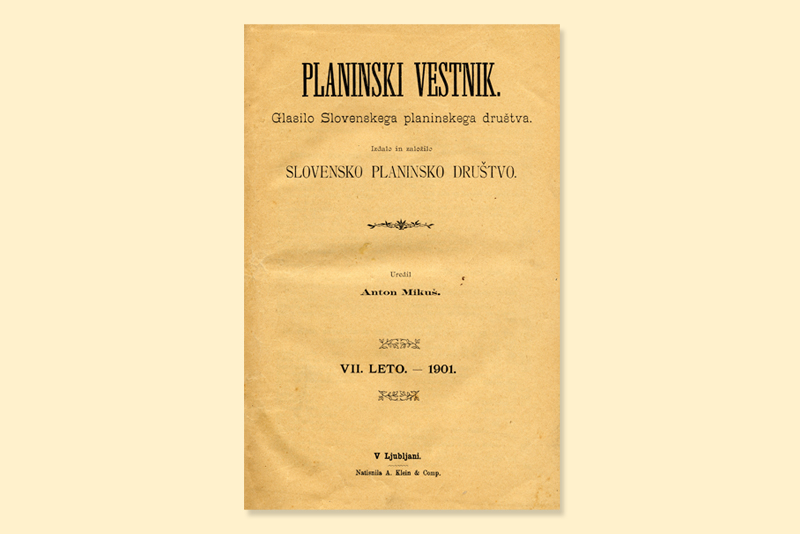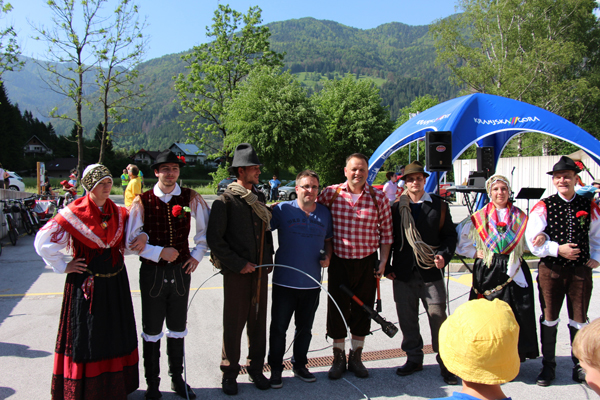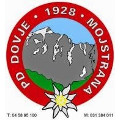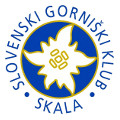A century-old dream come true
- 1901 First written records about a purpose-built alpine museum
- Czech initiative to conserve the Slovene mountaineering heritage
- 1932 Mountaineering exhibition at the Ljubljana fair
- 1984 Opening of the Triglavska muzejska zbirka collection (Triglav museum collection) and the Triglav National Park information point in Mojstrana (operated by the Dovje-Mojstrana mountaineering club)
- 1997 Part of the municipality collection is joined to the Gornjesavksi muzej Jesenice (Jesenice Upper Sava Museum)
- 2007 The ceremonial placing of the Slovene Alpine Museum foundation stone
- 2010 Official opening of the Slovene Alpine Museum
The first written records about a purpose-built alpine museum date back to 1901
Czech initiative to conserve the Slovene mountaineering heritage
Opening of the Triglavska muzejska zbirka collection (Triglav museum collection) in Mojstrana in 1984
The ceremonial placing of the Slovene Alpine Museum foundation stone in 2007
Urban planning
The object in its final design will be in conformity with the urban morphology of the surroundings. The building will be constructed in two phases. It will be a completed unit already after the first phase – 1600 m2 will offer enough space for exhibition rooms, library, hall, souvenir shop, and business premises. After the second phase, the Slovenian Mountaineering Museum will have additional 800 m2 for exhibition purposes. All together 1346 m2 will serve the museum activity.
Project Manager: Miro Eržen, Professional Manager: Irena Lačen Benedičič
Engineering company: Sector inženiring, d. o. o., Nova Gorica
The architecture respects the given environment and the purpose of the object.The building is designed as a rock mass and follows the composition of the natural environment. The roof and the outer wall are designed in the same way and covered with silver steel. The openings in the cladding coat will offer visitors a nice view of the surroundings and in the evening invite passers-by to visit the Museum.The outer appearance of the house resembles the herdsmen highland shelters – the dynamically structured roof, the face of the building with interwoven rhythmically put boards and arhythmically put laths, and the façade as a reflection of highland shelters. In this way, the object indicates the specific elements of our highlands.The exterior and interior are both designed in high technology, considering the modern trends of museum planning, and the newest audiovisual and information technology.
The architectural planning was carried out by the following experts: dr. Boris Leskovec, Alja Vehovec in Rok Kajtna
The mountains are our symbol
The mountain world has always inspired respect and admiration, challenged the brave and fired up the creative. We Slovenes are the only Alpine nation to associate our national identity with the mountains. In the mountains we have defied invading nations, expressed our patriotism, and defended the Slovene identity while the mountain tops flew Slovene flags. On the summit of Triglav, the highest of the Slovene mountains, Jakob Aljaž erected his famous tower, a symbolic image also adopted by the Slovene Alpine Museum.
A third millennium asset
A symbolic, cultural heritage, initially created by shepherd communities and hunters, prospectors of ore, herbalists and researchers, and in recent history by hikers, mountaineers, climbers, mountain guides, mountain hut staff, and brave men laying out and maintaining mountain trails, is preserved.
The Slovenes have managed to maintain a continuous link between the once barefoot shepherd and today’s top world-class alpinist.
The mountain world is also an invaluable source of fresh water, clean air and unspoilt nature.
Mountaineering museums throughout the Alpine countries are important institutions for deepening this historical memory, awareness and national identity.
The museum is intended for:
All Slovenes – to become conscious of our roots;
Young people – to show them another way;
Children – to encourage them to love the mountain world;
Mountaineers – to broaden their horizonts
Tourists – to intrigue and tempt them to enter our mountain world;
People with disabilities – to gain experiences which they have been deprived of.
- 1996 Signed letter of intent on the construction of the Slovene Alpine Museum in Mojstrana between the project partners: the Kranjska Gora Municipality, the Alpine Association of Slovenia and the Dovje-Mojstrana Alpine Club, later joined by the Triglav National Park Public Institute and Gornjesavski Muzej Jesenice (Jesenice Upper Sava Museum).
- 2002 The Kranjska Gora Municipality provides the necessary funds for the land purchase of the construction site of the Slovene Alpine Museum.
- 2002 Issue of an open call for proposals on the conceptual design of the building and the choosing of the most suitable solution.
- 2004 Application to an open call by the Slovene Ministry of Education, Science and Sport. Unsuccessful.
- 2006 Acquisition of a building permit.
- 2006 Project candidacy for financial support through the EEA and Norway Grants. Unsuccessful.
- 2007 Project candidacy for financial support through the European Structural and Investment Fund within the Ministry of Public Administration. An Agreement is reached with the Slovene Ministry of Culture for a partial project co-funding. On 24th August 2007, the then Prime Minister, Janez Janša, laid the foundation stone. The application for financial support through the European Structural and Investment Fund is unsuccessful. Architects prepare a detailed design revealing a 30% cost increase in the overall project implementation prior to the planned re-application to the September call.
- 2008 Establishment of the August Delavec Foundation for securing additional funding for the construction and operation of the museum. Project re-application for financial support through the European Structural and Investment Fund within the Ministry of Public Administration. The Kranjska Gora Municipality decides to allocate all available funds, in accordance with an agreement between the local municipalities of the Upper Carniola region, to the completion of the Slovene Alpine Museum project. In July, the Ministry of Public Administration approves the project for funding through the European Structural and Investment Fund. On 22nd July 2008 preparatory activities for construction began, while the principal works began after signing the contract on 7th August 2008.
- 2009 The Gornjesavski muzej Jesenice (Jesenice Upper Sava Museum), on the Register of Slovene Museums, obtains authorisation by the Government of the Republic of Slovenia for the implementation of the state public service. The project partners – the Kranjska Gora Municipality, the Gornjesavski muzej Jesenice (Jesenice Upper Sava Museum), the Mountaineering Association of Slovenia, the Triglav National Park Public Institute, and the Avgust Delavec Foundation – sign a contract on co-financing the operating costs of the Slovenian Alpine Museum for the period 2010-2015.
- On 7th August 2010, the President of the Republic of Slovenia, Dr Danilo Türk, in a solemn ceremony, officially opens the Slovene Alpine Museum.
- The museum includes a Triglav National Park information point.
- The museum is registered as a Slovene High-level Route control point.
- Part of the permanent exhibition – the introductory film Svetlobe gora (The Light of the Mountains) is translated into several languages.
- 2014 Renovation of the Alpine climbing section.
- 2015 (kaj ni bilo že prej) the museum is included in the Alpine Convention Day.
- 2015 (kaj ni bilo že prej) The permanent display is complemented by a permanent outdoor photo display: Slovenske gore v objektivu letnih časov (Slovene mountains in the light of the seasons).
- 2015 The permanent exhibition is complemented by a 3D view from the Sphinx in the Triglav North Face.
- 2016 Acquisition of a new museum object: the famed bivouac II and the “Escape into the Bivouac” adventure room.
- 2016 The museum is registered as a Slovene Mountain Bike Route control point.
- 2016 Opening of the TD Dovje-Mojstrana tourist information point.
- 2017 Opening of the Alpine Convention information point.
- 2017 Display of the new museum acquisition: the Burduš, the first Slovene mountain rescue helicopter.


















